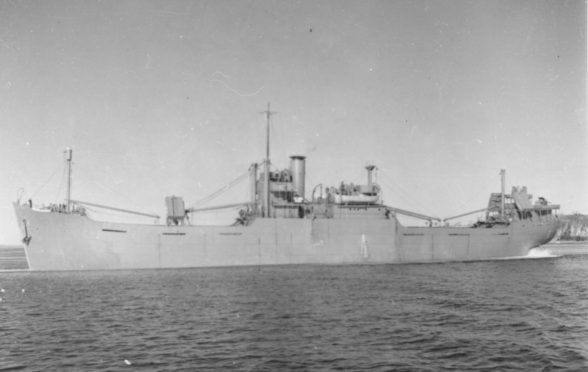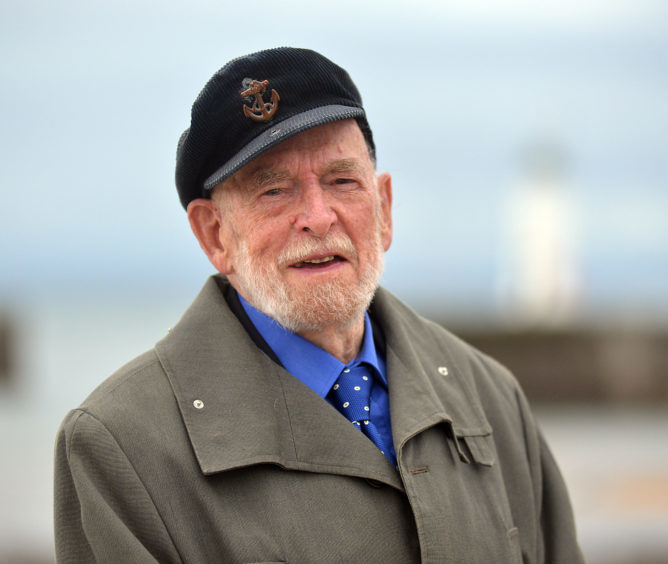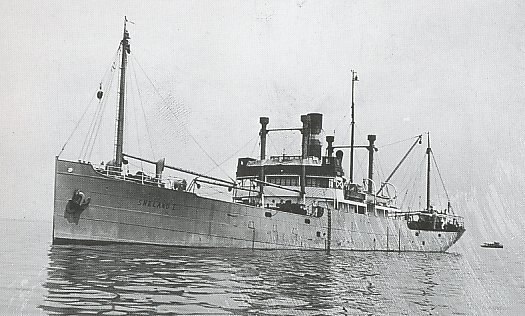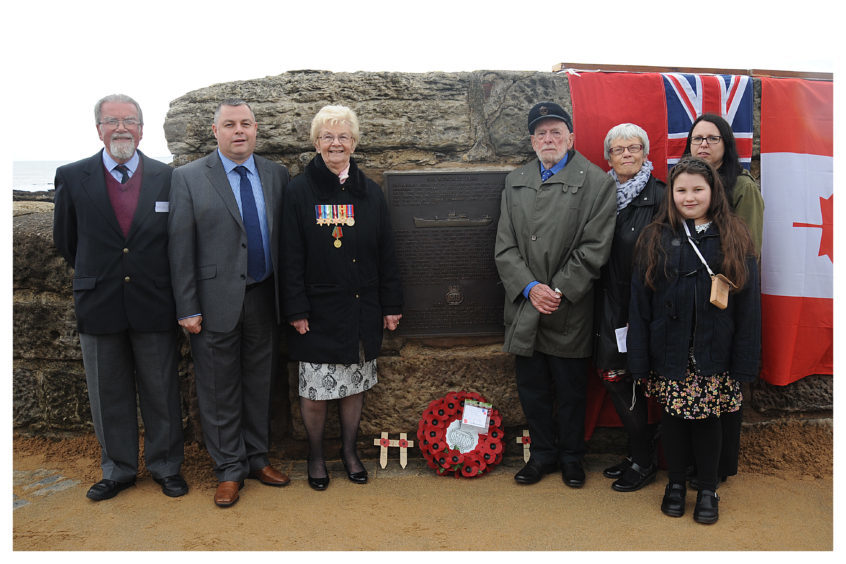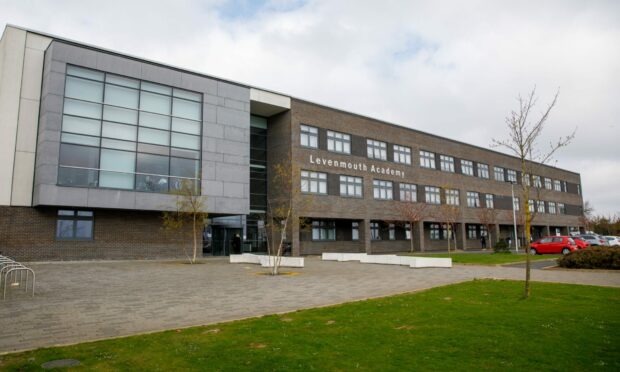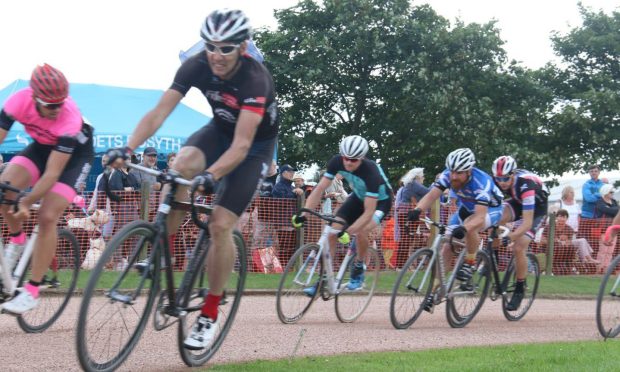With the 75th anniversary of VE Day upon us, Michael Alexander investigates one of the final acts of the Second World War in Europe which resulted in ‘pointless’ deaths off the coast of Fife.
It was the last merchant ship sunk by Germany shortly before the official end of the Second World War in Europe – and controversially, three days after an end to naval hostilities had been ordered by German high command.
At 10.40 pm on May 7, 1945, the cargo ship S.S. Avondale Park, built in Pictou, Nova Scotia, and on passage from Hull to Belfast, was sunk in convoy 1.5 miles south east of the May Isle in the Firth of Forth.
The torpedo was fired by the Type XX111 German submarine U2336 commanded by Kapitanleutnant Emil Klusmeier.
Another torpedo sank the Norwegian ship, Sneland1.
A short while later, the war in Europe officially ended.
U2336 was depth charged by the convoy escort, but escaped in the early hours of VE Day, May 8, 1945.
Chief engineer George Anderson and engine room donkeyman William Harvey died when the torpedo struck the Avondale Park’s engine room.
On Sneland 1, seven men were killed— Captain Johannes Laegland, Alf Berenson, Tormod Ringstad, Otto Skaugen, Simon Johanson, Nils Konradsen and William Ellis, aged 17, of Hull.
These were the last sinkings by a U-boat in the Battle of the Atlantic.
When the 70th anniversary of the sinking took place in May 2015, The Courier spoke to Sydney Rapley who had been a 17-year-old cabin deck boy on the SS Avondale Park.
In an exclusive interview at a dedication ceremony held in Anstruther to remember the sinkings, Mr Rapley, then 87, of Dorking, Surrey, relived those final hours of the Second World War and his escape from the ship as it went down.
He said: “We had come down through the Pentland Firth and on the evening of May 7 I took the helmsman a cup of cocoa and biscuits.
“I went back to my cabin to sleep. I was reading the Readers’ Digest when the torpedo hit. I got blown up out of my bunk. I was on the top so hit the roof.
“We got to the lifeboat and were picked up by a Royal Navy vessel minutes later.”
Mr Rapley said he had felt “very unhappy” about the tragedy for many years and never talked about it.
However, as time wore on, he forgave the German commander who claimed he never received orders to cease fire.
During the Battle of the Atlantic, some 35,000 British and allied merchant seamen lost their lives between the sinkings of the RMS Athenia in 1939, and the S.S. Avondale Park, in 1945.
Those lost in this attack were amongst the most poignant and pointless casualties of all.
The order for U-boats to cease hostilities had been given three days earlier by Reichsadmiral Doenitz.
As the survivors of this last U-boat attack were taken to the Flying Angel Mission in Methil for showers and first aid, the country celebrated victory in Europe, and the families of those killed put out flags for their safe return.
To commemorate the significance of these events, and to mark the wartime contributions of the three nations involved—Canada, which built and owned the S.S. Avondale Park, Norway, which contributed men and ships to the Battle of the Atlantic, and Britain, whose crew sailed the S.S. Avondale Park—Anstruther Town Centre Working Group mounted a commemorative plaque on the sea wall at Anstruther in 2015.
The project was supported by Kilrenny, Anstruther and Cellardyke Community Council, Fife Council, Fife Charities Trust, Anstruther Improvement Association , the Community Kist, Anstruther, Bristol Merchant Navy Association, Mr Sydney Rapley, Mrs Pam Harper and Mrs Celia Turnbull.
The story was researched and the plaque designed by Town Centre Working Group member Glenn Jones.
A party of divers led by Steve Haddow on the Anstruther-based boat Mako also planned to go out to dive on the wreck of the Avondale Park to place a Canadian flag there.
Glenn Jones of the Anstruther Town Centre working group told The Courier: “When I first researched the loss of the ships, I was surprised how little was known, both locally and nationally, about an event so close to home which seemed so meaningful. At the very end of a terrible war, the pointless and all but forgotten sinking of these small ships is a reminder of its human cost. So we decided to commemorate it. ”
The Battle of the Atlantic was the longest continuous military campaign in the Second World War, running from 1939 to the defeat of Germany in 1945.
At its core was the Allied naval blockade of Germany, announced the day after the declaration of war, and Germany’s subsequent counter-blockade.
It was at its height from mid-1940 through to the end of 1943.
The Battle of the Atlantic pitted U-boats and other warships of the Kriegsmarine (German navy) and aircraft of the Luftwaffe (German Air Force) against the Royal Canadian Navy, Royal Navy and Allied merchant shipping.
The convoys, coming mainly from North America and predominantly going to the UK and the Soviet Union, were protected for the most part by the British and Canadian navies and air forces.
As an island nation, the UK was highly dependent on imported goods.
The defeat of the U-boat threat was a pre-requisite for pushing back the Germans, and Winston Churchill later wrote: “The Battle of the Atlantic was the dominating factor all through the war. Never for one moment could we forget that everything happening elsewhere, on land, at sea or in the air depended ultimately on its outcome.”
The Courier told in 2018 how the loss of the SS Avondale Park was being commemorated in Canada.
The Home Port Heroes project by federal agency Parks Canada honoured the men and women who built the ships of Canada and Allied merchant navies, and those who sailed them through war zones for the cause of freedom.
